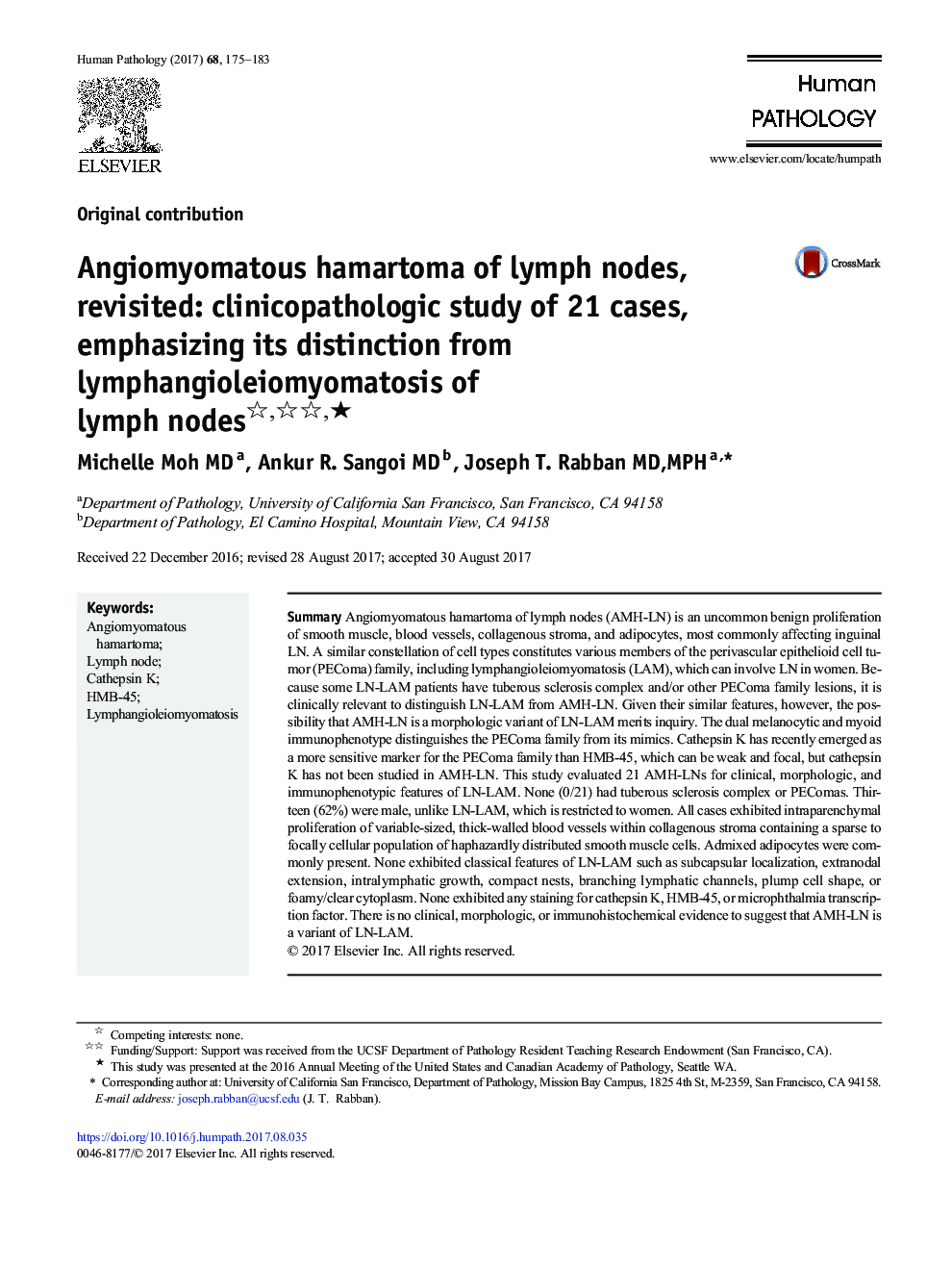| Article ID | Journal | Published Year | Pages | File Type |
|---|---|---|---|---|
| 5716099 | Human Pathology | 2017 | 9 Pages |
â¢Angiomyomatous hamartoma of lymph nodes is shown to not be a variant of PEComa.â¢It does not exhibit the clinical or morphologic features of lymphangioleiomyomatosis.â¢There is no immunohistochemical staining for PEComa markers cathepsin K or HMB-45.
SummaryAngiomyomatous hamartoma of lymph nodes (AMH-LN) is an uncommon benign proliferation of smooth muscle, blood vessels, collagenous stroma, and adipocytes, most commonly affecting inguinal LN. A similar constellation of cell types constitutes various members of the perivascular epithelioid cell tumor (PEComa) family, including lymphangioleiomyomatosis (LAM), which can involve LN in women. Because some LN-LAM patients have tuberous sclerosis complex and/or other PEComa family lesions, it is clinically relevant to distinguish LN-LAM from AMH-LN. Given their similar features, however, the possibility that AMH-LN is a morphologic variant of LN-LAM merits inquiry. The dual melanocytic and myoid immunophenotype distinguishes the PEComa family from its mimics. Cathepsin K has recently emerged as a more sensitive marker for the PEComa family than HMB-45, which can be weak and focal, but cathepsin K has not been studied in AMH-LN. This study evaluated 21 AMH-LNs for clinical, morphologic, and immunophenotypic features of LN-LAM. None (0/21) had tuberous sclerosis complex or PEComas. Thirteen (62%) were male, unlike LN-LAM, which is restricted to women. All cases exhibited intraparenchymal proliferation of variable-sized, thick-walled blood vessels within collagenous stroma containing a sparse to focally cellular population of haphazardly distributed smooth muscle cells. Admixed adipocytes were commonly present. None exhibited classical features of LN-LAM such as subcapsular localization, extranodal extension, intralymphatic growth, compact nests, branching lymphatic channels, plump cell shape, or foamy/clear cytoplasm. None exhibited any staining for cathepsin K, HMB-45, or microphthalmia transcription factor. There is no clinical, morphologic, or immunohistochemical evidence to suggest that AMH-LN is a variant of LN-LAM.
